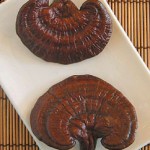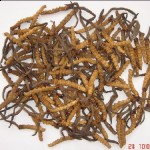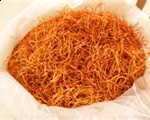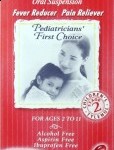 This is a very interesting story out of Stanford School of Medicine. They literally stumbled upon a “substance” to help avoid liver toxicity from acetaminophen related liver damage.
This is a very interesting story out of Stanford School of Medicine. They literally stumbled upon a “substance” to help avoid liver toxicity from acetaminophen related liver damage.
Gary Peltz, MD, PhD, professor of anesthesiology at Stanford said “My postdoctoral fellow, whose parents and other family members in Asia were taking this compound in their supplements, started laughing. He recognized it immediately.”
The supplement has been marketed as an herbal medicine known as Vitamin U and used for the treatment of digestive problems for years. (I love this part) “It’s highly abundant in many plants”.
Another victory for phyto-medicinals, vindicated by Western doctors at one of the most prestigious universities in the U.S. “By administering SMM, which is found in every flowering plant and vegetable, we were able to prevent a lot of the drug’s toxic effect,” said Peltz
It’s difficult to phanthom that liver damage is a side effect of one of the most popular drugs (Tylenol) OTC for pain, and is also the number one cause of liver transplantation surgeries. What’s quite disturbing is this quote; “Unfortunately, the prevalence of acetaminophen makes it easy to accidentally exceed the recommended levels, which can occur by dosing more frequently than indicated or by combining two or more acetaminophen-containing products. However, severe liver damage can occur at even two to three times the recommended dose (the maximum adult dose is 4 grams per day; toxic daily levels range from 7 to 10 grams).
“It’s a huge public health problem,” said Peltz. “It’s particularly difficult for parents, who may not realize that acetaminophen is in so many pediatric medicines.”
More information on Acetaminophen
GENERIC NAME: acetaminophen BRAND NAME: Tylenol and others DRUG CLASS AND MECHANISM: Acetaminophen belongs to a class of drugs called analgesics (pain relievers) and antipyretics (fever reducers). The exact mechanism of action of acetaminophen is not known. Acetaminophen relieves pain by elevating the pain threshold, that is, by requiring a greater amount of pain to develop before a person feels it. It reduces fever through its action on the heat-regulating center of the brain. Specifically, it tells the center to lower the body’s temperature when the temperature is elevated. The FDA approved acetaminophen in 1951. PRESCRIPTION: No. GENERIC AVAILABLE: Yes. PREPARATIONS: Liquid suspension, chewable tablets, coated caplets, gelcaps, geltabs, and suppositories. Common dosages are 325, 500 and 650 mg. STORAGE: Store tablets and solutions at room temperature 15°-30°C (59°-86°F). Suppositories should be refrigerated below 27°C (80°F). PRESCRIBED FOR: Acetaminophen is used for the relief of fever as well as aches and pains associated with many conditions. Acetaminophen relieves pain in mild arthritis but has no effect on the underlying inflammation, redness, and swelling of the joint. If the pain is not due to inflammation, acetaminophen is as effective as aspirin. It is as effective as the non-steroidal antiinflammatory drug ibuprofen (Motrin) in relieving the pain of osteoarthritis of the knee. Unless directed by physician, acetaminophen should not be used for longer than 10 days. DOSING: The oral dose for adults is 325 to 650 mg every 4 to 6 hours. The maximum daily dose is 4 grams. The oral dose for a child is based on the child’s age, and the range is 40-650 mg every 4 hours. When administered as a suppository, the adult dose is 650 mg every 4 to 6 hours. For children, the dose is 80-325 mg every 4 to 6 hours depending on age. DRUG INTERACTIONS: Acetaminophen is metabolized (eliminated by conversion to other chemicals) by the liver. Therefore drugs that increase the action of liver enzymes that metabolize acetaminophen [for example, carbamazepine (Tegretol), isoniazid (INH, Nydrazid, Laniazid), rifampin (Rifamate, Rifadin, Rimactane)] reduce the levels of acetaminophen and may decrease the action of acetaminophen. Doses of acetaminophen greater than the recommended doses are toxic to the liver and may result in severe liver damage. The potential for acetaminophen to harm the liver is increased when it is combined with alcohol or drugs that also harm the liver. Cholestyramine (Questran) reduces the effect of acetaminophen by decreasing its absorption into the body from the intestine. Therefore, acetaminophen should be administered 3 to 4 hours after cholestyramine or one hour before cholestyramine . Acetaminophen doses greater than 2275 mg per day may increase the blood thinning effect of warfarin (Coumadin) by an unknown mechanism. Therefore, prolonged administration or large doses of acetaminophen should be avoided during warfarin therapy. PREGNANCY: Acetaminophen is used in all stages of pregnancy and is the drug of choice for short-term treatment of fever and minor pain during pregnancy. NURSING MOTHERS: Acetaminophen is excreted in breast milk in small quantities. However, acetaminophen use by the nursing mother appears to be safe. SIDE EFFECTS: When used appropriately, side effects with acetaminophen are rare. The most serious side effect is liver damage due to large doses, chronic use or concomitant use with alcohol or other drugs that also damage the liver. Chronic alcohol use may also increase the risk of stomach bleeding. Reference: FDA Prescribing Information






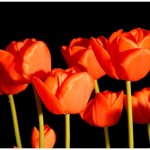 Botany of Desire
Botany of Desire